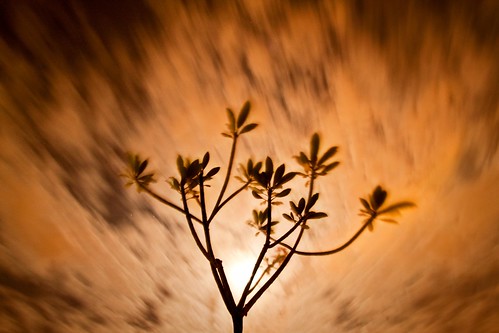Church camp ended today! Being camp photographer and shooting 3.5 days non-stop is surely tiring, but once again I'm ever thankful to serve Him with whatever skills I have. I initially thought the camp would be boring and kiddish, but no no it was a meaningful and enjoyable time, and a refreshing encounter.
Throughout the camp I put my new Canon 10-22mm f3.5-4.5 USM lens to the test. I've not used it extensively enough to know everything about it, so keep in mind this review is sort of a first impressions kinda thing.
If you're into MTF charts and what not, then I suggest heading over to the
Luminous Landscape. My review is based on actual usage of this lens.

Firstly, this lens is an EF-S lens, so it will only work with Canon cropped bodies, and not with full-frame (FF) cameras like the 5D mark 2. I use this lens on the Canon 500D. Factoring in the 1.6X crop factor, the equivalent focal length is 16-35mm, which goes from ultra wide angle (UWA) to wide angle. Thus if you're thinking of going FF later, you might want to avoid this lens.
If you've used the Canon EF-S 17-85 or EF-S 17-55 lenses, you'd immediately feel at home using the EF-S 10-22. These lenses are very identical in terms of build quality, operation and design. The first thing I noticed about the 10-22 is its light weight and compact size. It is lighter than both the 17-85 and 17-55, and marginally shorter than the 17-85. The filter thread size is 77mm, which is the same size as most of Canon's pro lenses. I could carry this lens the whole day without complain.
In terms of build quality, it is very good. It sports a metal mount, a distance scale, full-time manual focusing (FTMF), and internal zooming. That means the lens does not extend when zooming (but the front element shifts in and out while zooming). The build quality, is however, not as good as the "L" series. That said, this lens is sturdy and strong enough for daily use, and should be more than acceptable for many photographers. The focusing mechanism of the lens is also very good. Focus is fast and quiet thanks to the ultrasonic motor. The minimum focusing distance is also really close, at 24cm. Again, if you've used the 17-85, the focusing speed and accuracy is almost identical, and both very good.
Now to the optical quality of the 10-22. This is where the lens really shines. Although it does not have the "L" designation, it is an optically excellent lens. I've tried shooting wide open during camp in indoor lighting conditions, and got very very sharp photos. Generally speaking, this lens was designed to perform well wide open. Stopping down does improves border sharpness, while centre sharpness doesn't seem to visibly improve at all. I was shooting at around f5.6 during the camp with flash, and at that aperture the entire frame is decently sharp as long as it's within the depth-of-field. If you don't get sharp photos with the 10-22, its likely due to mis-focus or long shutter speeds as opposed to lens sharpness issues.
Distortion on the 10-22 is also very well managed. In real-world usage it is not an issue at all. However, lens test do show a little bit of barrel distortion at 10mm. At 22mm, it is distortion-free.
If there is something negative about the 10-22's image quality, that has to be chromatic aberration (CA), or purple fringing. Generally, CA is well-managed for a UWA. It is within acceptable limits, but it is noticeably there when viewed at 100% magnification. It is more pronounced when shooting in high-contrast lighting, and less so when shooting indoors. However, if you are a photographer and not a pixel-peeper, then I can say CA is a minor issue, and can be corrected in post.
Other than that, it seems to me that the 10-22 is an optically perfect lens. It is surely not "L" build quality, but optically, I dare say it is. I wouldn't hesitate to say this is a professional lens when it comes to the images it produces.
Lastly, how does the 10-22 compare with other UWAs on the market? So far, I've used the Tokina 11-16 f2.8 and the Sigma 10-20 f4-5.6, and so I'll make a few quick comparisons.
Of these 3 UWAs, the Sigma 10-20 is the least impressive. It is the least sharp wide open, and only works well at f8 onwards. If I have to choose one UWA specifically for events coverage, it will still be the Canon 10-22. The Tokina is also a very good lens, but the main problem is the limited zoom range. I would prefer to have the more versatile range of the Canon than the fast 2.8 aperture of the Tokina.
To conclude, I do not regret getting the Canon 10-22mm. If you shoot Canon and want a UWA, I wouldn't hesitate to recommend this lens to you. I love the super wide 10mm view and the unique effect it gives, and in cramped shooting situations this lens will help you get everything in.
However, apart from events coverage, another application would be in landscape/architecture photography. In fact this was the main reason why I purchased it. Will shoot some landscapes and share my experiences in the coming weeks. But for now, this lens is highly, highly recommended, as long as you don't intend to go FF in future!



















